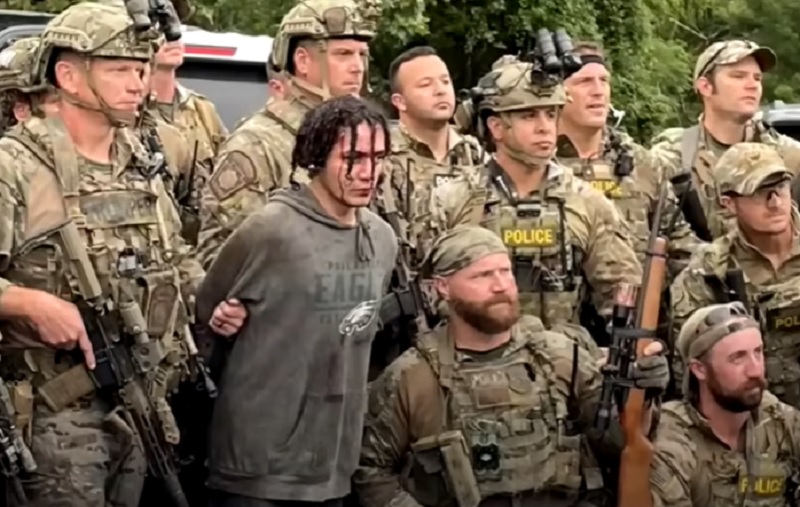

In the tradition of no good deed going unpunished, police critics could not celebrate relief after the capture of fugitive murderer Danelo Cavalcante. In addition to the complaint that it took too long to achieve a successful end to the manhunt, that the use of thermal imaging can be controversial as an invasion of privacy, the latest gripe is that officers took a photo with Cavalcante.
Although critics, professors, and consultants offered opinions that the photo was inappropriate, unprofessional, inhumane, and could be damaging evidence, none of those arguments are valid in this writer’s view. But verbal sparing with police critics and journalists in a defensive mode can be an exercise in digging your own public relations burial plot. Here are some script options.
Option 1 – Attack the accuser. “I don’t know who started asking this question but my guess it’s the same person sitting in their underwear in the mom’s basement trying to start another rumor that Starbucks is canceling Christmas. Unless someone can give me a specific reason other than sympathy with a violent killer, I’m going to have to assume this accusation is a failed attempt at satire and should be relegated to an Onion headline.”
Option 2 – Ignore it. “Next question.”
Option 3 – Reject the premise. “The question presumes that there is some kind of prohibition of this kind of photo. There is not. It violates no policy of any of the agencies. There is no grinning or mockery on the faces of the officers. There is no sign of torture or abuse. There was no delay in getting needed medical attention to the suspect. Other than being a photograph there is no comparison to Abu Ghraib or Wild West photos of gunslinger’s corpses. There is nothing to explain, defend, or apologize for.”
Option 4 – Sincere apology. “Our mission was accomplished and there was nothing to be gained by taking a photograph of the officers with the suspect. We assure you that policies will be reviewed and that steps will be taken to protect the dignity of all suspects in the future.”
Option 5 – Snarky apology. “Thank you for pointing out that after days of tireless efforts, thousands of hours of labor shared by multiple law enforcement partners, wise use of technology, and a successful capture of an armed murderous fugitive had a photo taken. First of all, we apologize for the appearance of the officers who looked like they had spent the night in the woods in a thunderstorm. Secondly, we apologize to the suspect’s victim who was brutally murdered, for possibly embarrassing her ex-boyfriend. To all of those who were triggered by the sight of armed officers in tactical uniform, we hope that you can find some hot tea and a warm blankie for comfort.”
Option 6 – Professional, factual response: “They’re proud of their work. I’m not bothered at all by the fact that they took a photograph with him in custody. “They kept the community safe,” Bivens — the public spokesperson for state police during the manhunt — said. “I say thanks to them and good job.”” This was part of the statement from Pennsylvania State Police Lt. Col. Bivens, which was validated by his boss Col. Christopher Paris who added “The professional restraint that they showed and being able to take him alive and in relatively good health, we’re very proud of that professionalism.”
I vote for option 6.